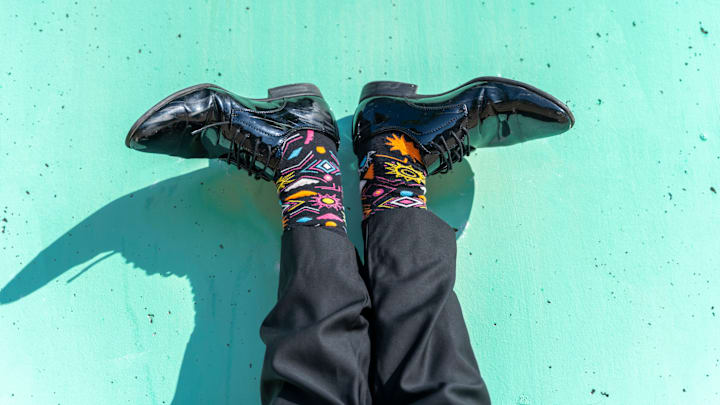Picture this: you’re waiting in line at the grocery store, you’re on the bus ride home, or you’re sitting outside an office for a job interview. A song begins playing, either over the speakers or just in your head as you wait. Unconsciously, your foot begins to tap out the beat of the song. But why?
Human brains love finding patterns everywhere, and they love anything that increases their dopamine supply. Whether you realised it or not, music entails both recognizable patterns and a shot of the happy hormones. Music gives us connections to the world around us, and our brains soak it up, filling our bodies with new emotions and experiences. Tapping our feet is like our brain doing a little happy dance to the patterns and emotions music brings.

The Science Behind Musical Connections
A study done at the University of Oslo explored the “motor theory of perception” in relation to music. The motor theory of speech perception says that humans understand language by replicating the spoken words with our mouths. So, the researchers in Oslo wanted to see if the body understands music through replication as well. They found that people also imitate the body movements that their brains think are used to make the sounds in the songs.
Does that mean that tapping your feet is your brain’s way of imitating the drum pedal being pressed? Not quite. While the toe-tapping could replicate the drum pedal, that would mean that every song we tapped our feet to had that drum beat. That just isn’t true. We tap our feet to all sorts of rhythms in music. A more likely explanation for tapping your feet is that it is subtle enough to be socially acceptable.

Everybody Stims
Scientists have been able to connect movement, deliberate or unconscious, with music. They’ve explained why we get the urge to jump up and dance when a song we love comes on at a party. But how does the feet-tapping come into play? Well, humans have learned that life is not a musical where people spontaneously burst out a song and dance routine to share their emotions. But our bodies still want to move! So we adapted other smaller movements to keep our bodies and society happy.
These small, repetitive body movements are called “stims,” short for self-stimulatory behaviors. Stimming is movement that helps our brains and bodies process and regulate emotions.

Got Rhythm?
When music affects our mood and emotions, our brains try to make sense of it all through movement. Tapping our toes to the beat of a song is a natural way for us to process those emotions subconsciously. Even if you’re not choosing to make those tapping motions, your brain is regulating your nervous system through those stims.
So the next time you find yourself tapping your foot to a song, just remember that it’s your brain and your body working together to calm you or express your excitement in a way that won’t get you weird looks on the subway.
If you want to learn more amazing facts about our brains and our connections to our world, check out Mental Floss’s section on big questions!
